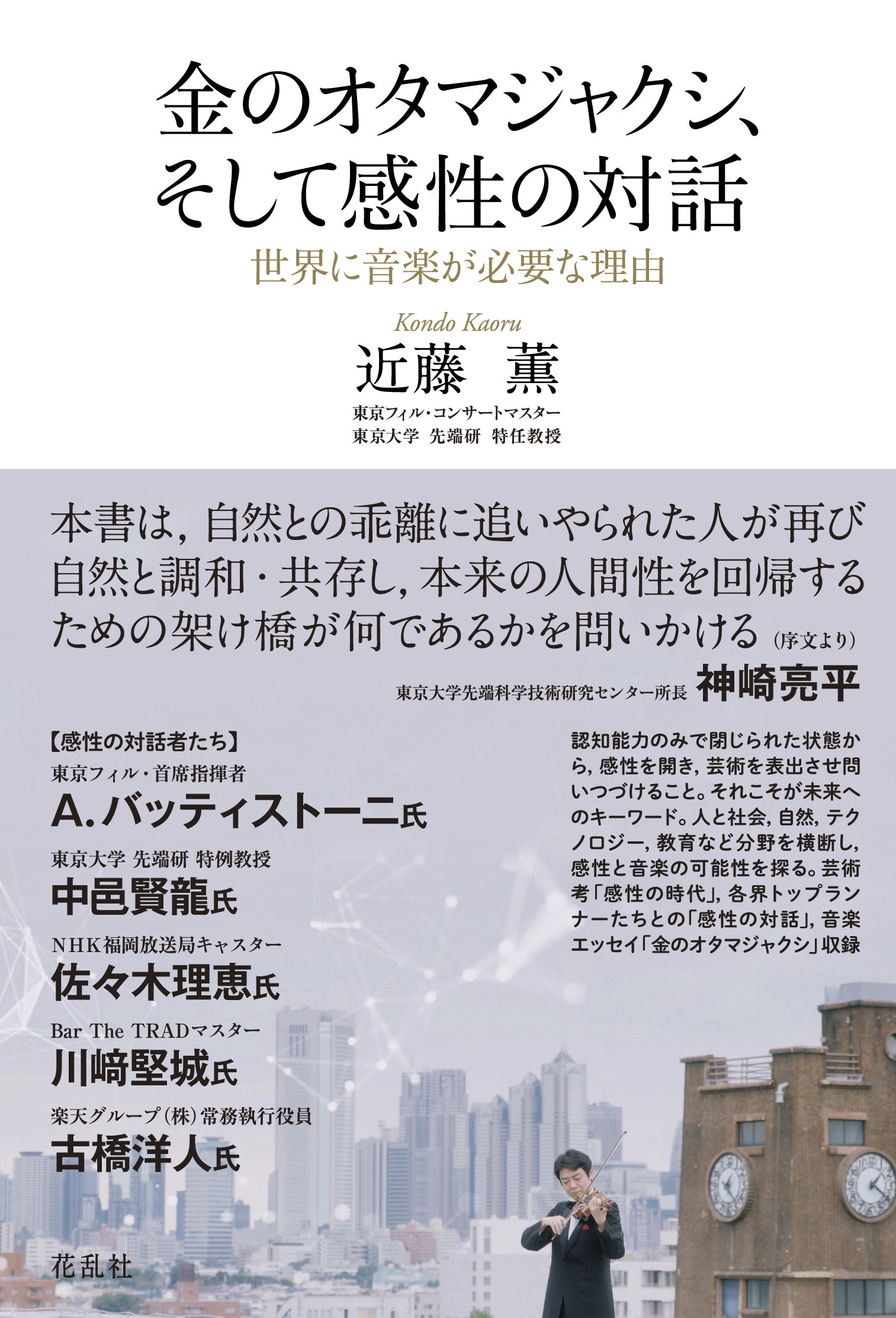
Title
Kin no Otama-Jakushi, Soshite Kansei no Taiwa (The Golden Notes and Dialogue on Sensitivity - Why the World Needs Music)
Size
300 pages, 127x188mm, softcover
Language
Japanese
Released
June, 2021
ISBN
978-4-910038-32-2
Published by
Karansha
Book Info
See Book Availability at Library
Japanese Page
This book has a unique three-part structure consisting of my own thoughts on art, dialogues with leading figures in various domains, and a series of essays published in a newspaper. I chose this unique structure because “art,” which is the central topic of the book, is extremely difficult to talk about in words and it was necessary to play around with the structure to convey what I want to say as accurately as possible to the reader. The book is divided into three parts with each part having a different perspective and tone; that said, the essence of the discussion is the same in all of the sections. It is my hope that readers come away with an intuitive sense of the book as a whole.
Classical music performance, which is my area of expertise, requires extremely high skill and specialist knowledge. Many months and years of training are needed to acquire the necessary skill, which, especially in the case of piano and violin, means practice every day from a very young age. In fact, I started playing violin when I was about 2 and a half years old. I probably learned to read music before I learned to read words. I feel that my many years communicating with others using a different type of sound than language, which is the medium by which we exchange ideas, have given me a slightly different view of the world than others who are not musicians. Language has the quality of differentiating things—differentiating the self from others, apples from oranges, and people from the outside world. This differentiation means converting the world into information, which allows this information to be handled and transformed into words by the conscious mind. Meanwhile, music and art are things that cannot be differentiated. Artistic and musical expression often occurs unconsciously. When I am performing, there are times when I can sense that there are levels of unconsciousness. The separation between the unconscious and the conscious mind narrows and the two intermingle. At times, I become aware of the unconscious mind. I am in a state where I am able to perceive the world before differentiation. This is discussed in “Deodar Cedar of the Research Center for Advanced Science and Technology, the University of Tokyo: The Age of Oneness” in Part 1, “Dialogue with Battistoni” in Part 2, and in the essay titled “Zones” in Part 3. It is one representation of the essence of art.
The question of why society needs art is one of the main themes of the Advanced Art Design Lab of the Research Center for Advanced Science and Technology (RCAST), the University of Tokyo, which seeks to create society with a nature-centered perspective, as opposed to a human-centered perspective. Everything in nature is in balance and harmony. There is no unnecessary noise. Furthermore, in nature, renewal occurs constantly and fluidly. Nature is the best model for achieving the type of sustainable society that addresses all aspects comprehensively called for by the SDGs. What is needed to shift from a human-centered perspective in which we attempt to control nature using our conscious cognitive abilities to a nature-centered perspective in which humans and nature are not differentiated is to create an “art environment” in which art is truly applied to society. In such a society, the society as whole continues to ask what art is, which is the very question posed by this book.
(Written by KONDO Kaoru, Project Professor, Research Center for Advanced Science and Technology / 2021)



 Find a book
Find a book

